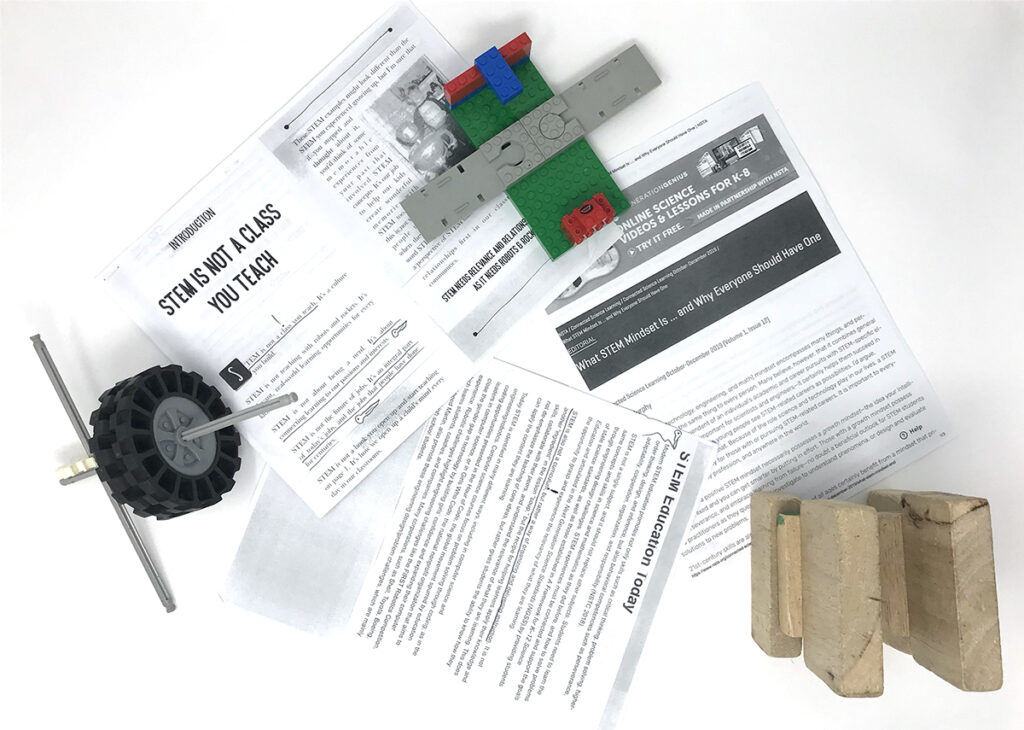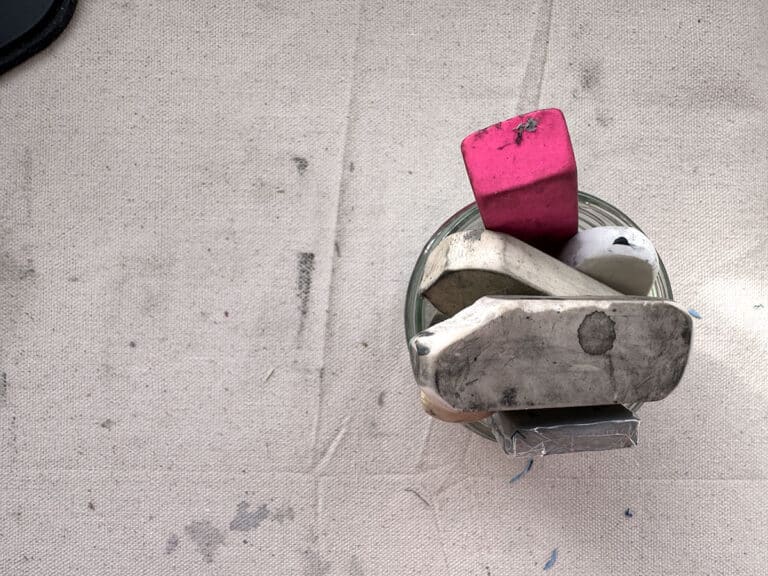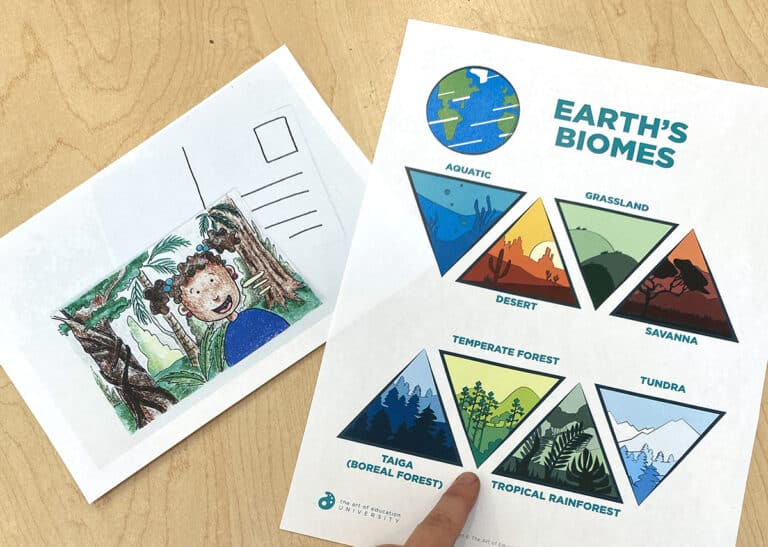There are so many education-adjacent buzzwords, theories, and acronyms. It can be difficult to know which will have a lasting effect on education and which will be short-lived. STEAM—Science, Technology, Engineering, Art, and Math—may seem like one of those acronyms that get frivolously thrown around in education jargon. But research has shown a STEAM-based approach in the classroom can have a positive impact on the cognitive and affective side of human development. Simply put, this means STEAM can help improve students’ brain development and social-emotional well-being. It also has the potential to help students think critically, be creative, and innovate. This is great preparation for the up-and-coming job fields of computer science, digital technology, automation, and artificial intelligence.
STEAM should not necessarily be thought of as a separate class or segment you teach. Frame it more as an approach to designing a learning experience that considers how the students engage with and use STEAM to think. Through the learning process, students reflect and move forward from failures and find multiple solutions to a problem.

What if I am not tech-savvy? What if I have limited resources? Doesn’t STEAM seem difficult? Where do I begin? If these concerns resonate with you, check out AOEU’s STEAM resources. Packs, like STEAM Projects for the Art Room or Intermediate STEAM Projects for the Art Room in PRO Learning offer self-paced professional development through short videos. For lesson plans aligned with all 50 states’ standards that include step-by-step tutorials, assessments, and tons of student-facing resources: filter our FLEX Curriculum library by the STEAM category.
People may assume STEAM is all about fancy tech, gadgets, and gizmos. If tech and gadgets are your things, by all means, teach them! But this type of interdisciplinary learning can inspire little artists with budget-friendly materials and simple topics.
Before we dive into designing a STEAM lesson, here are four simple pieces of advice to overcome common fears:
- Start small.
- Choose a medium that’s comfortable for you.
- Focus on one integration within STEAM.
- Jump in! Try the lesson, reflect on how it went, and then adjust as needed.
Teaching anything new means gaining confidence over time. Take it lesson by lesson and be open to making changes along the way! There are many nuances to STEAM teaching, so it will take a while to dial in the particulars. Today, we will get you started with top-level tips to make a well-designed STEAM lesson.
Use these five tips when designing a STEAM learning experience.
1. Choose your integration.
The first step is deciding what to focus on. Maybe you want to do something with angles or fractions—an origami lesson would be perfect. Or you would like to do classes outside to incorporate nature observations—a biomimicry lesson. Choose an integration for a natural starting point.
2. Ask your students.
It’s not outlandish to take an interest inventory from your classes, asking students outright what they would like to learn about. Is your class full of third-graders interested in Star Wars? Have them design their own fleet of intergalactic space vehicles. Who knows, Jon Favreau may want them in the newest season of The Mandalorian.
3. Collaborate.
You do not need to be a content expert in everything. Team up with the science, math, or tech teachers in your building or district. Together, there is no doubt you can come up with an amazing integrated lesson everyone will love!
4. Encourage exploration, experimentation, and mistake-making.
The focus of a STEAM-based lesson is letting students tinker around, try their own ideas, discover, and sometimes fail. It can be hard to relinquish control. But in raw learning situations, let the creativity thrive, entertain crazy ideas, and—even if you don’t think it will work—let students take the driver’s seat and find out for themselves.
5. Utilize the resources you have.
Art budgets are tight, so use the materials already available. Popsicle sticks, cardboard, scissors, construction paper, and glue go a long way in an engineering lesson where students build a skyscraper. Once you feel more confident with STEAM learning and are ready for the next step, seek out more elaborate materials, apply for a grant, or talk to your administration about ordering some cool stuff!

Are you jazzed up about STEAM-integrated learning? Try these four resources in your next lesson:
1. Tinkercad
Tinkercad is a free online resource for designing models in three dimensions. It is fun on its own and can be used in conjunction with 3D printers.
2. 3D Printers
Maybe you have thought about a 3D printer for your art room. There are a lot of considerations such as an open or closed-style printer, single or dual extruder, PLA or ABS filament, slicer and design software, and more. Here are three budget-friendly options to get you started in the 3D design realm:
3. Makey Makey STEM Kit
If you applied for a grant, did some fundraising, or were able to squeeze in extra allocation for the art budget, a Makey Makey STEM Kit can be a lot of fun! It teaches students about coding and electronic circuits. It’s also super hands-on. It comes with alligator clips and a controller you can hook up in various ways to perform different functions—like playing the piano using banana keys. It can even pick up current from a graphite pencil drawing. Check out the video below to see how it works:
4. Lego Spike Essentials and Lego Coding Express
Pair color-coded blocks, ribbon wires, and motors with the simplicity of building using multicolored bricks. See how Lego introduces the world of STEAM to little learners. Students can create anything from robots to trains, planes, bridges, and automobiles that function. These kits carry a hefty price tag—but if you can get your hands on some, it can be a fun and familiar way to get even the youngest artists involved in something “techy” in the STEAM world.

Remember, STEAM does not require the most high-tech gadgets to be engaging. STEAM is a mode of learning that encourages exploration and integrates other subjects like Science, Technology, Engineering, or Math. It does not have to be a separate topic you teach—instead, it can offer a new lens when examining your existing lessons.
Consider STEAM to be another tool in your toolbox when you are trying to plan or deliver a lesson. Who knows? Maybe this could be the one that has students coming back years later saying, “I remember when we did this! It really opened me up to new possibilities. I just graduated with my engineering degree by building bridges.” Try something new and out of your comfort zone—and see how you and your students grow.
Have you taught a STEAM lesson before? If so, what integration(s) and materials did you use?
If you are new to STEAM, which idea for integration will you try?
Magazine articles and podcasts are opinions of professional education contributors and do not necessarily represent the position of the Art of Education University (AOEU) or its academic offerings. Contributors use terms in the way they are most often talked about in the scope of their educational experiences.





